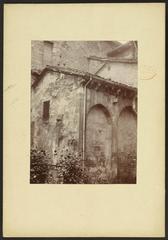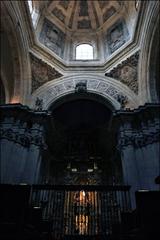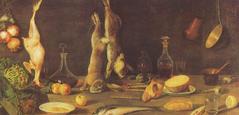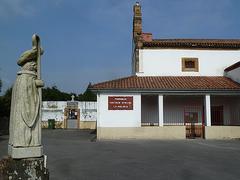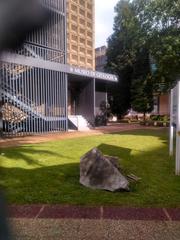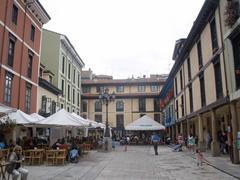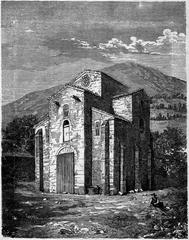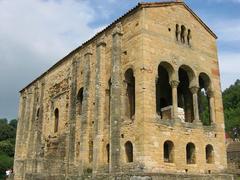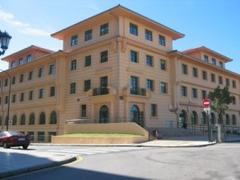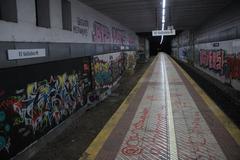
Comprehensive Guide to Visiting the Sanctuary of Carbayu, Oviedo City, Spain
Date: 17/08/2024
Introduction
Nestled in the serene environs of Oviedo, within the Asturias region of Spain, the Sanctuary of Carbayu stands as a testament to the area’s rich cultural and religious heritage. Known in Spanish as “Santuario del Carbayu,” this iconic religious site draws visitors with its fascinating history, architectural splendor, and profound spiritual significance. The sanctuary’s origins are steeped in local legend, where it is believed that the Virgin Mary appeared on an oak tree, leading to the establishment of a place of worship. Over the centuries, the site evolved from a Romanesque temple to the current Baroque-style church, showcasing the transition in European ecclesiastical architecture (Wikipedia). Declared a “Bien de Interés Cultural” in 1992, the sanctuary is not only a pilgrimage site but also a cherished cultural landmark that continues to captivate visitors with its mystique and historical importance (Wikipedia).
This comprehensive guide aims to provide potential visitors with all the essential information needed for a memorable visit, including historical context, architectural highlights, practical travel tips, and nearby attractions. Whether you are a history buff, an architecture enthusiast, or a spiritual pilgrim, the Sanctuary of Carbayu offers a unique and enriching experience. The guide will also cover important aspects such as visiting hours, ticket information, and accessibility, ensuring that your trip is both enjoyable and informative.
Table of Contents
- Introduction
- History of the Sanctuary of Carbayu
- Visitor Information
- Nearby Attractions
- Historical Context of Oviedo
- FAQs
- Conclusion
History of the Sanctuary of Carbayu
Origins and Early History
The Sanctuary of Carbayu, known in Spanish as “Santuario del Carbayu,” is a significant religious site located in Asturias, Spain. The sanctuary’s origins are deeply rooted in local legend and religious tradition. According to local lore, the Virgin Mary appeared on an oak tree, known as “Carbayu” in the Asturian language. This miraculous event led to the establishment of a place of worship at the site (Wikipedia).
Architectural Evolution
The original structure at the site was a Romanesque temple, which was later replaced by the current Baroque-style church in the 18th century. This transition from Romanesque to Baroque architecture reflects broader trends in European ecclesiastical architecture during this period. The Baroque style is characterized by its elaborate ornamentation, dynamic shapes, and dramatic use of light and shadow, all of which can be seen in the Sanctuary of Carbayu (Wikipedia).
Cultural Significance
In 1992, the Sanctuary of Carbayu was declared a “Bien de Interés Cultural” (Cultural Interest Site), underscoring its importance in the cultural and religious heritage of Asturias. This designation helps protect the site and ensures its preservation for future generations (Wikipedia).
The Legend of the Virgin Mary
The legend of the Virgin Mary’s appearance on an oak tree is central to the sanctuary’s history. This event is commemorated in the church’s baroque altarpiece, where a figure of the Virgin Mary is situated on the trunk of an oak. This legend not only adds a layer of mysticism to the site but also highlights the deep-rooted religious beliefs of the local population (Wikipedia).
Visitor Information
Visiting Hours and Tickets
The Sanctuary of Carbayu is open to visitors throughout the year. Typical visiting hours are from 9 AM to 6 PM, but it is advisable to check the official website or contact the sanctuary directly for the most up-to-date information. There is no admission fee, but donations are welcome to help with the site’s maintenance.
Travel Tips
- Getting There: The sanctuary is located in Oviedo, which is well-connected by road and public transport. You can take a bus or a taxi from the city center to reach the sanctuary.
- Best Time to Visit: The best time to visit is during the spring and autumn months when the weather is mild and the site is less crowded.
- What to Bring: Comfortable walking shoes, a camera, and a small donation for the sanctuary.
Nearby Attractions
Cathedral of San Salvador
Located in the heart of Oviedo, this cathedral is a must-visit for its stunning architecture and historical significance. The cathedral’s origins can be traced back to the 8th century, and it stands as a testament to the artistic and spiritual heritage of the city of Oviedo (NS Cristiandad).
Pre-Romanesque Churches
Explore the UNESCO World Heritage Sites of San Miguel de Lillo and Santa María del Naranco, both built in the 9th century. These structures are notable for their unique architectural styles, which were unaffected by Islamic influence, making them distinct in the context of Spanish ecclesiastical architecture (Medievalists.net).
Cámara Santa
Part of the Cathedral of San Salvador, this site houses important relics and is a World Heritage Site. The Cámara Santa was dynamited during the Spanish Civil War but has since been restored to its former glory (For 91 Days).
Historical Context of Oviedo
Medieval Significance
During the medieval period, Oviedo played a crucial role in the Christian Reconquista. The city was a significant pilgrimage center, second only to Santiago de Compostela. The Way of St. James, a famous pilgrimage route, includes Oviedo as a key stop, further enhancing the city’s religious significance (NS Cristiandad).
Architectural Heritage
Oviedo is home to several pre-Romanesque churches, many of which are UNESCO World Heritage Sites. These include the churches of San Miguel de Lillo and Santa María del Naranco, both built in the 9th century. These structures are notable for their unique architectural styles, which were unaffected by Islamic influence, making them distinct in the context of Spanish ecclesiastical architecture (Medievalists.net).
The Impact of the Spanish Civil War
Oviedo’s rich history was marred by the Spanish Civil War, during which the city suffered significant damage. In 1934, during the Miner’s Strike, the Cámara Santa was dynamited, and over 3,000 miners were killed. The city was further devastated during the Spanish Civil War, with 75% of it being destroyed. Despite these challenges, Oviedo has managed to preserve its historical and cultural heritage (For 91 Days).
Modern-Day Oviedo
Today, Oviedo is known for its livability, cleanliness, and pedestrian-friendly streets. The city has made significant efforts to preserve its historical sites while also promoting modern amenities. This blend of old and new makes Oviedo a unique destination for visitors interested in history, culture, and architecture (For 91 Days).
FAQs
Q: What are the visiting hours for the Sanctuary of Carbayu?
A: The sanctuary is typically open from 9 AM to 6 PM. It’s best to check the official website for the most current information.
Q: Is there an admission fee?
A: There is no admission fee, but donations are welcome.
Q: How can I get to the Sanctuary of Carbayu?
A: The sanctuary is accessible by bus or taxi from Oviedo city center.
Q: What are some nearby attractions?
A: Nearby attractions include the Cathedral of San Salvador, pre-Romanesque churches, and the Cámara Santa.
Conclusion
The Sanctuary of Carbayu is more than just a religious site; it is a living testament to the rich cultural and historical tapestry of Oviedo and the broader Asturias region. From its legendary origins marked by the appearance of the Virgin Mary on an oak tree to its transformation into a Baroque architectural masterpiece, the sanctuary encapsulates the enduring religious and cultural significance of the area (Wikipedia). Visitors to the Sanctuary of Carbayu not only step into a place of worship but also immerse themselves in a historical narrative that has shaped the identity of Oviedo and its people. The sanctuary’s declaration as a “Bien de Interés Cultural” underscores its importance and ensures its preservation for future generations (Wikipedia).
By following the comprehensive tips and information provided in this guide, you can make the most of your visit to this iconic religious site. From exploring the nearby attractions like the Cathedral of San Salvador and the pre-Romanesque churches to understanding the broader historical context of Oviedo, this guide serves as your go-to resource for a fulfilling and memorable experience. Don’t forget to check out related posts and download the Audiala mobile app for more travel tips and updates. Plan your visit today and immerse yourself in the rich history and culture of Oviedo.
References
- Wikipedia. (n.d.). Sanctuary of Carbayu. Retrieved from Wikipedia
- NS Cristiandad. (n.d.). Significación. Retrieved from NS Cristiandad
- Medievalists.net. (2010, April). The Origin of Spain: Monuments of Oviedo and the Kingdom of Asturias. Retrieved from Medievalists.net
- For 91 Days. (n.d.). A Concise History of Oviedo. Retrieved from For 91 Days
- The Catholic Travel Guide. (n.d.). Oviedo, Spain. Retrieved from The Catholic Travel Guide
- The Independent. (n.d.). Oviedo City Guide, Spain. Retrieved from The Independent
- Champion Traveler. (n.d.). Best Time to Visit Oviedo, Spain. Retrieved from Champion Traveler
- Best Places in Spain. (n.d.). What to Visit in Oviedo. Retrieved from Best Places in Spain
- Inside the Travel Lab. (n.d.). Asturias Road Trip Itinerary. Retrieved from Inside the Travel Lab
- Turismo Asturias. (n.d.). Las 10 Mejores Cosas que Ver y Hacer en Oviedo. Retrieved from Turismo Asturias


